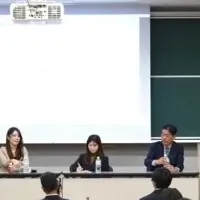
Machine Learning Revolutionizes Thermoelectric Material Development at MANA Research Center
Machine Learning Revolutionizes Thermoelectric Material Development at MANA Research Center
In a groundbreaking development, researchers at the Research Center for Materials Nanoarchitectonics (MANA) in Tsukuba, Japan, are transforming the field of materials science by integrating machine learning techniques with traditional methodologies. This innovative synergy aims to expedite the discovery of kesterite-type thermoelectric materials, which are crucial for efficient energy conversion technologies.
Kesterite-type materials, such as Cu2ZnSnS4, have garnered attention due to their capacity to convert waste heat into electricity. What makes these materials appealing is that they are non-toxic and composed of abundant elements, making them highly accessible. Moreover, they exhibit a remarkable figure of merit (zT), a parameter that quantifies thermoelectric efficiency, of over 1 within the temperature range of 300 to 800K (26 to 526°C). At around 500K, these kesterites experience a structural transition that significantly influences their thermoelectric performance. However, determining the optimal manufacturing conditions to refine these materials has historically been a slow, labor-intensive process that often involves a multitude of experimental trials.
The research team at MANA, led by Dr. Cedric Bourges, has harnessed an advanced machine learning method known as Active Learning with Bayesian Optimization (ALMLBO). This cutting-edge approach allows researchers to analyze crucial sintering parameters such as heating rates, sintering temperatures, holding times, cooling rates, and applied pressures, correlating them with thermoelectric properties gleaned from experiments. By iteratively recommending new experimental conditions, the ALMLBO process has drastically reduced the time and effort typically required to optimize material performance.
In just four experimental cycles, the MANA researchers achieved an impressive 60% improvement in thermoelectric performance of Cu2.125Zn0.875SnS4 by fine-tuning the sintering process. The experiments commenced with data from 11 samples prepared through spark plasma sintering, where a blend of copper, zinc, tin, and sulfur powders underwent treatment in a partial vacuum. Impressively, the ALMLBO model can predict sintering conditions that yield a record-high maximum zT of 0.44 at 725K.
As the researchers excitedly state, “This method illustrates how merging machine learning with conventional materials science can accelerate discovery and optimization in intricate material systems.” Furthermore, the implications of this research extend beyond thermoelectric materials, with the potential for rapid advancements in various fields, including photovoltaics, batteries, and electronics.
These findings from MANA not only enhance our understanding of thermoelectric materials but also signal a pivotal shift towards the use of machine learning in materials development. This integration highlights how technology can streamline research processes and foster innovation, paving the way for sustainable energy solutions. As energy demands continue to rise globally, the ability to efficiently convert waste heat into usable energy becomes increasingly valuable, reinforcing the urgent need for continued research and development in this area.
MANA’s innovative approach is a clear indicator of the future landscape of materials science, where machine learning will play a central role in shaping sustainable technologies that promise to benefit both society and the environment.
Topics Other)










【About Using Articles】
You can freely use the title and article content by linking to the page where the article is posted.
※ Images cannot be used.
【About Links】
Links are free to use.